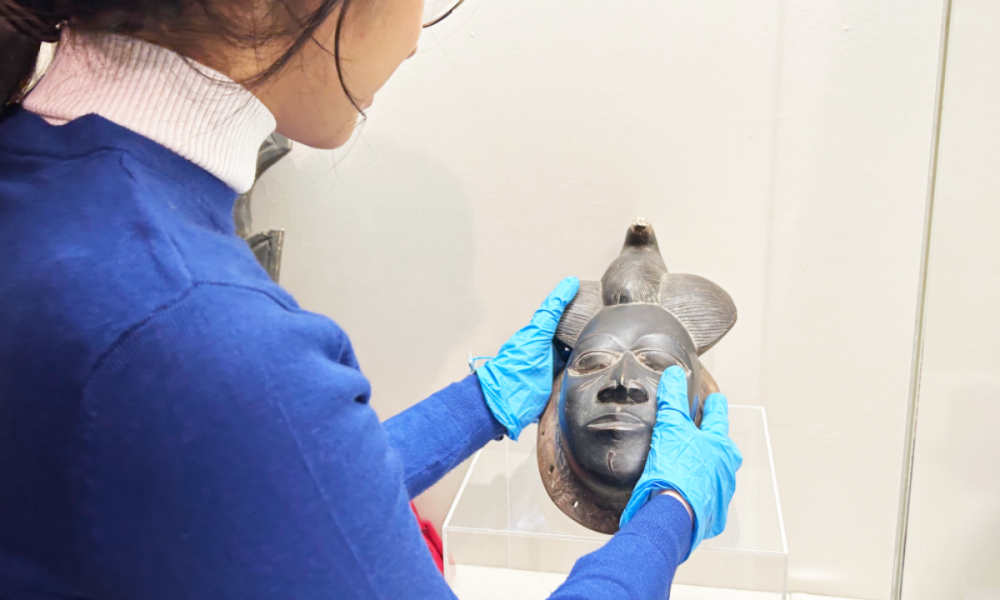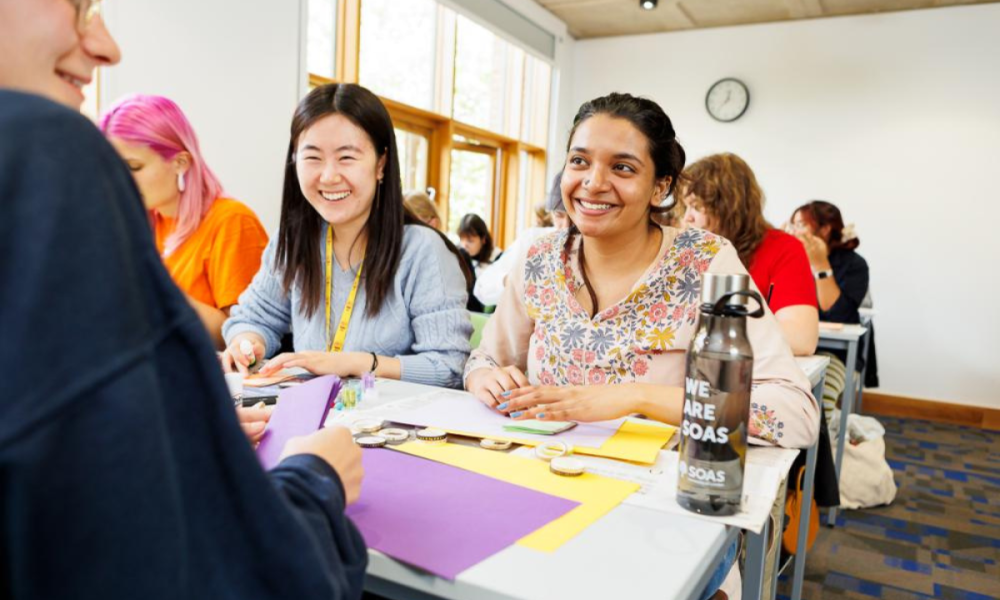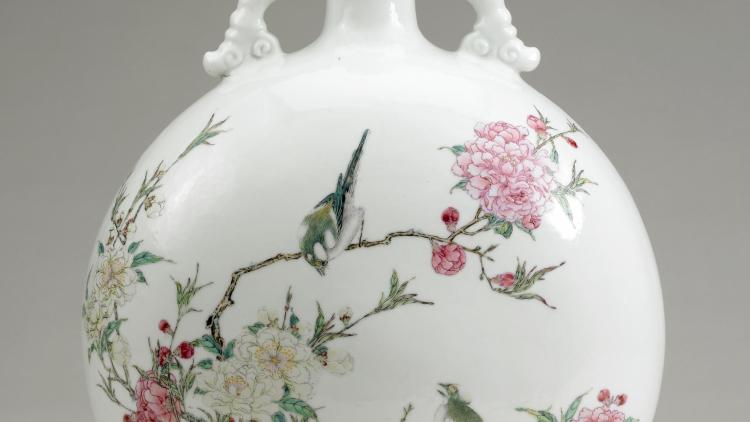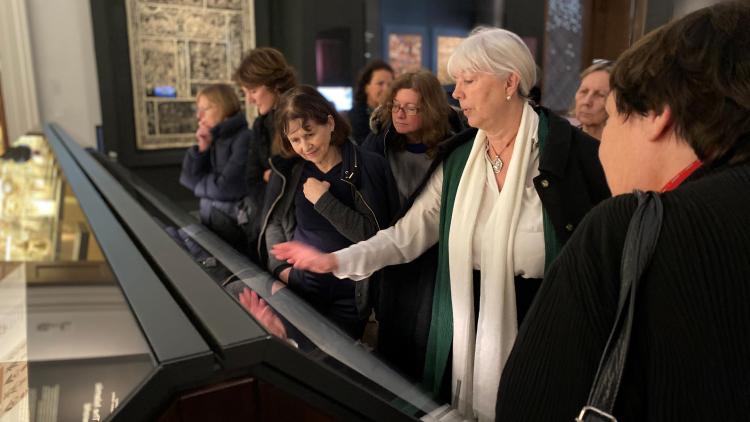What attracted me to SOAS? Decentralising the Western perspective in the world of art
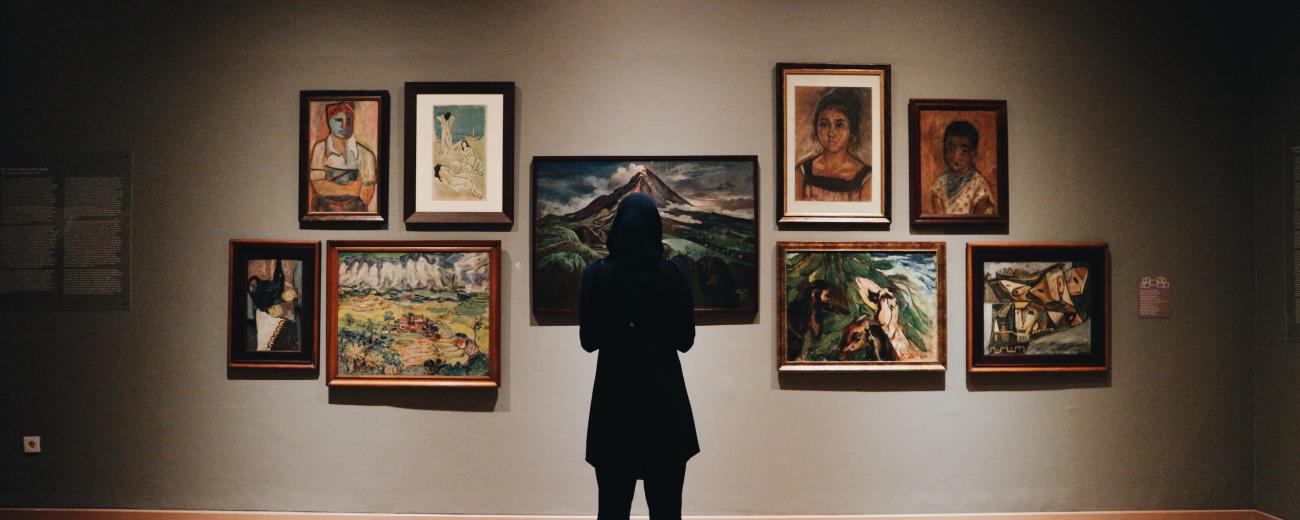

SOAS alumna Zoë Saebu studied MA History of Art and Archaeology and now works as a researcher of Dutch military history at the Netherlands Institute for Military History (NIMH). We asked Zoë a few questions about her time studying at SOAS and beyond.
What initially attracted you to choose to study at SOAS?
I think the focus on the Global South, as well as the attempt to decentralise the predominantly Western perspective in the world of arts, is what attracted me to SOAS at first. Additionally, I could combine many interests I had in the arts without having to do multiple MAs. The broad MA History of Art and Archaeology lets you pick and mix in terms of regions, disciplines and material cultures – which is quite unique in terms of its multidisciplinary approach towards visual material.
How did the staff at SOAS University of London support your development?
The faculty members and instructors of the School of Arts were all very approachable. They were most helpful in supporting interests in their respective field of expertise, reacting very enthusiastically if the opportunity presented itself with literature recommendations – but also tips about current art events around the city, such as exhibitions or lectures. At times, once the pandemic allowed for such events, they would also take students to such events or invite speakers to give guest lectures. With weekly office hours, it was easy to speak to them outside of class. They were also quick to reply to e-mails or stick around after class to answer questions.
Did you have opportunities for hands-on experiences, such as field trips, exhibitions, or collaborations with museums or galleries?
Due to the global pandemic, I think there were fewer opportunities for hands-on experiences than the School of Arts would have wanted. Nonetheless, there were several field trips to exhibitions and museums – both during class and optionally outside of term time. For instance, we were able to enjoy a trip to Oxford to visit the Ashmolean Museum and the Pitt Rivers.
The network of our faculty provided students with unique experiences in that we were able to visit certain exhibitions, sometimes accompanied by curators or members of the museum staff who would then elaborate on curatorial choices or politics of the institution. This engagement made the academic discussions more tangible and provided us with the opportunity to ask questions to professionals or reflect on future possibilities towards such professions. Further, some classes focused solely on hands-on experiences, such as creating our own exhibition with the SOAS collection as well as a field trip to the Netherlands and France.
Were there any unique resources or facilities that enriched your experience as a student?
SOAS’ great location in the centre of London provides its students with the opportunity to visit many museums and art galleries in-between classes. For example, the British Museum lies just behind SOAS. I often went there after lessons to reflect on what I had learned about exhibitions or restitution, providing me with hands-on translations of academic material.
Furthermore, the SOAS library is extensive up to the point where the most niche topics are covered. The library staff is always willing to help find such topics for students who are interested in the broadest topics. We also have our own exhibition space where faculty members and students can be creative and reflexive about the subjects they are passionate about. SOAS’ special collections hold many interesting objects with which such exhibitions can be created. Additionally, given that SOAS is part of the University of London, I was able to access other libraries that were within walking distance. This provided me with additional literature but also alternative study spaces in which I could do my research.
After completing your MA, what career opportunities opened up for you?
As for my current position, I am working as a researcher of Dutch military history at the Netherlands Institute for Military History (NIMH), The Hague. I am currently doing research on cases of extreme violence during the Indonesian War for Independence, looking at what happened in South Sulawesi on a micro-level (day-by-day tracking of specific units) when the Depot Speciale Troepen (DST, Depot Special Forces) arrived there - these special forces were under the command of Raymond Westerling and Vermeulen.
